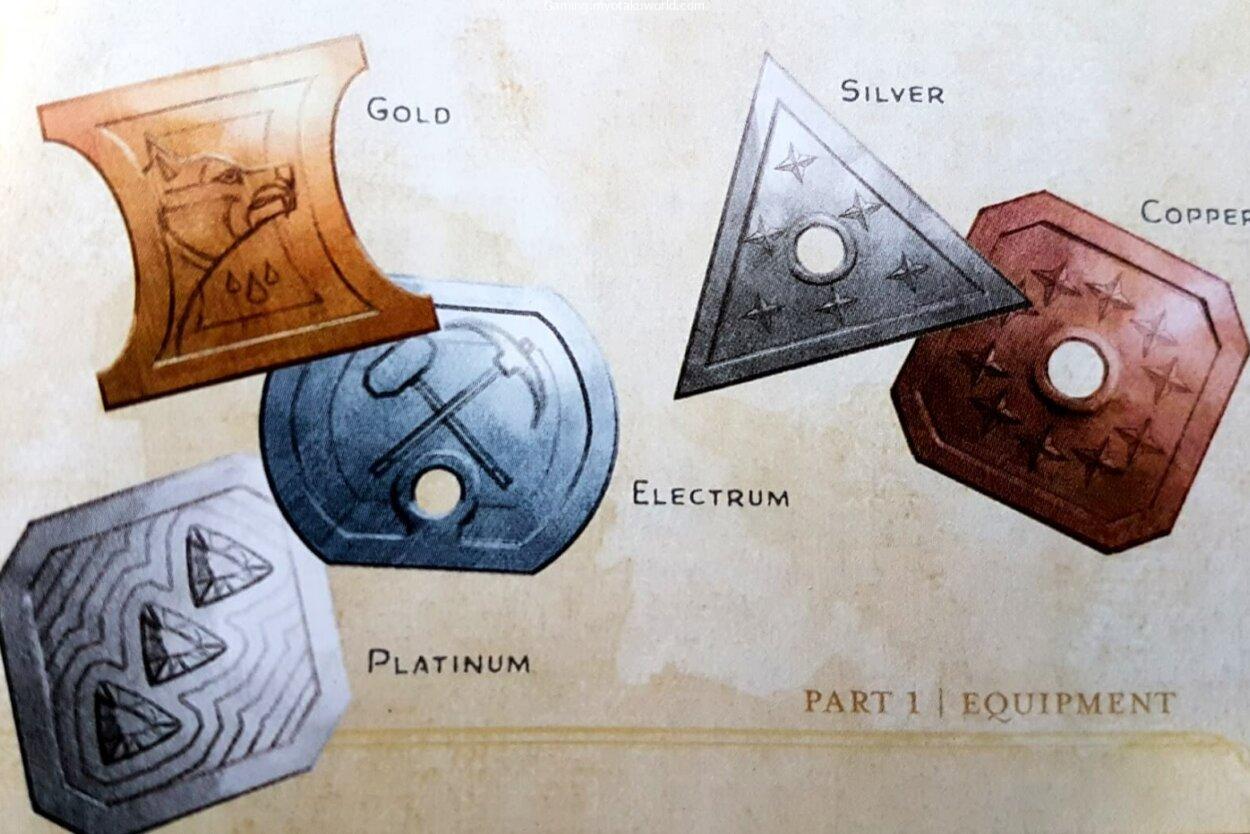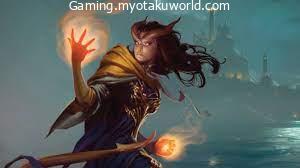In this complete guide, we’ll learn about Electrum DND, a strange currency in the Dungeons & Dragons world that is often confused.
Find out how it can be used, what its pros and cons are, how well it converts, and how you can use it in your projects.
What Is Electrum in DND?
In Dungeons & Dragons (D&D), you can buy things with gold, silver, copper, and platinum, but you can also buy things with Electrum.
Electrum is a type of metal combination that is mostly made up of gold and silver. This gives it a unique look and value.
In the game, Electrum pieces (EP) are worth half a Gold piece (GP). This makes them the halfway ground between silver and gold.
What Is the Point of Electrum in DND?
Electrum is mostly used to build up the world.
The unique currency gives the economies and nations in the game more depth and flavor.
It also gives Dungeon Masters (DMs) more ways to make treasure hoards, item prices, and prizes.
Electrum can also be used to add wonder and intrigue to a story because of its unique properties and historical associations.
How To Use Electrum in DND
To get the most out of DND Electrum, think about the following:
- Electrum can be added slowly, either through treasure chests or as a reward for tasks.
- Use it as a plot point, maybe by tying it to a certain place, culture, or event in history.
- Make sure people know the value and exchange rate of the currency.
Let’s look at a simple table with some examples and talk about conversion rates.

Electrum DND Currency and Conversion Exchange Table
| Currency | Conversion |
|---|---|
| Copper | 1 CP |
| Silver | 10 CP or 1 SP |
| Electrum | 50 CP or 5 SP or 1/2 GP |
| Gold | 100 CP or 10 SP or 1 GP |
| Platinum | 1000 CP or 100 SP or 10 GP or 1 PP |
Electrum DND Currency and Conversion Table
Electrum DND Pros and Cons
| Pros of Electrum in D&D | Cons of Electrum in D&D |
|---|---|
| Offers a unique middle-ground currency value | Limited use and availability compared to other currencies |
| Provides a diverse range of pricing options | Can complicate the game’s economy for players and Dungeon Masters |
| Adds realism and immersion to the game world | Requires additional effort to track and convert to other currencies |
| Allows for more detailed and nuanced trade interactions | Can be confusing for new players unfamiliar with Electrum |
| Offers an opportunity for strategic decision-making | Limited use in official D&D adventures and published materials |
| Can encourage creative role-playing and storytelling | Requires additional bookkeeping for players and Dungeon Masters |
Why Everyone Hates Electrum in DND?
People often say that Electrum DND is harder to convert than other currencies and harder to understand.
As we said in the “Pros and Cons” part, players might find it hard to understand how much electrum is worth or see it as an unnecessary addition to the game.
There are already enough complicated rules for magic and fighting in DND.
Why add numbers to the exchange of money?
Even so, Electrum can be a useful tool for DMs and players who are ready to work with its unique qualities.
Electrum Items & Equipment
Electrum in D&D can be used to craft various items and equipment, each with its unique characteristics and potential uses in your campaign.
Here are some examples of Electrum items and equipment:
- Electrum-Infused Weapons: Electrum can be incorporated into the forging process of weapons, adding a touch of magical or elemental properties. For instance, an Electrum-Infused Longsword might deal additional lightning damage on a successful hit or have an enchantment that increases the wielder’s accuracy in dimly lit areas.
- Electrum Jewelry: Skilled craftsmen can create intricate and ornate jewelry using Electrum. These pieces may offer magical benefits or serve as status symbols within the game world. For example, an Electrum Amulet could provide resistance against a specific type of damage or enhance the wearer’s charisma when interacting with nobility.
- Electrum-Plated Armor: Armor plated with Electrum can provide unique benefits, such as increased resistance to specific types of damage or the ability to reflect magical attacks. An Electrum-Plated Shield might grant additional protection against spells or provide a bonus to saving throws against magical effects.
- Electrum-Imbued Scrolls: Scribes and spellcasters can inscribe magical scrolls using Electrum ink, imbuing them with enhanced magical properties. These Electrum-Imbued Scrolls could contain more powerful spells or have additional effects when used, making them highly sought after by adventurers.
- Electrum-Enhanced Tools: Craftsmen, artisans, and thieves alike may utilize tools with Electrum enhancements. For example, an Electrum-Lined Lockpick set could provide a bonus to picking locks or an Electrum-Edged Dagger might have improved accuracy or increased damage against certain creatures.
It’s important to note that the creation of Electrum items and equipment can vary depending on the rules and guidelines established by the Dungeon Master. Additionally, the availability and complexity of Electrum crafting may differ based on the campaign setting or the level of magic present in the game world.
By introducing Electrum items and equipment, players have an opportunity to acquire unique and powerful gear, adding depth and customization to their characters’ abilities and playstyles. These items can serve as rewards for completing quests, as treasures found in ancient ruins, or as a result of skilled craftsmanship in major cities.
Remember to tailor the Electrum items and equipment to fit your campaign’s narrative and balance them appropriately to maintain the game’s integrity and enjoyment for all players involved.
FAQs
What is Electrum in D&D, and how does it differ from other currencies?
Electrum is a currency in D&D that serves as a middle-ground value between gold and silver. It provides a pricing option between the two extremes, allowing for more diverse trade interactions. It differs from other currencies by offering a unique value and adding realism to the game world.
How do players acquire Electrum in D&D?
Players can acquire Electrum through various means, such as looting treasure chests, receiving it as a reward for completing quests, finding it as part of a character’s backstory, or exchanging other currencies for Electrum with NPCs (non-player characters) in the game world.
Can Electrum be used in official D&D adventures and published materials?
While Electrum is an official currency in D&D, its use and inclusion in published adventures may vary. Some adventures may feature specific regions or economies where Electrum is prevalent, while others may focus more on gold and silver. It’s important to check the specific adventure or campaign setting for guidance on the use of Electrum.
How do players keep track of their Electrum holdings?
Players typically keep track of their Electrum holdings in their character sheets or on separate inventory sheets. They can note the amount of Electrum they possess and update it whenever they gain or spend this currency. Some groups may also use digital tools or apps designed for D&D to assist with tracking various currencies, including Electrum.
Can Electrum be converted into other currencies in D&D?
Yes, Electrum can be converted into other currencies like gold or silver. The conversion rate may vary depending on the game world and the specific rules established by the Dungeon Master. Players can exchange their Electrum for other currencies through NPCs or during trade interactions, but it may require negotiation or finding the right buyer or seller.









